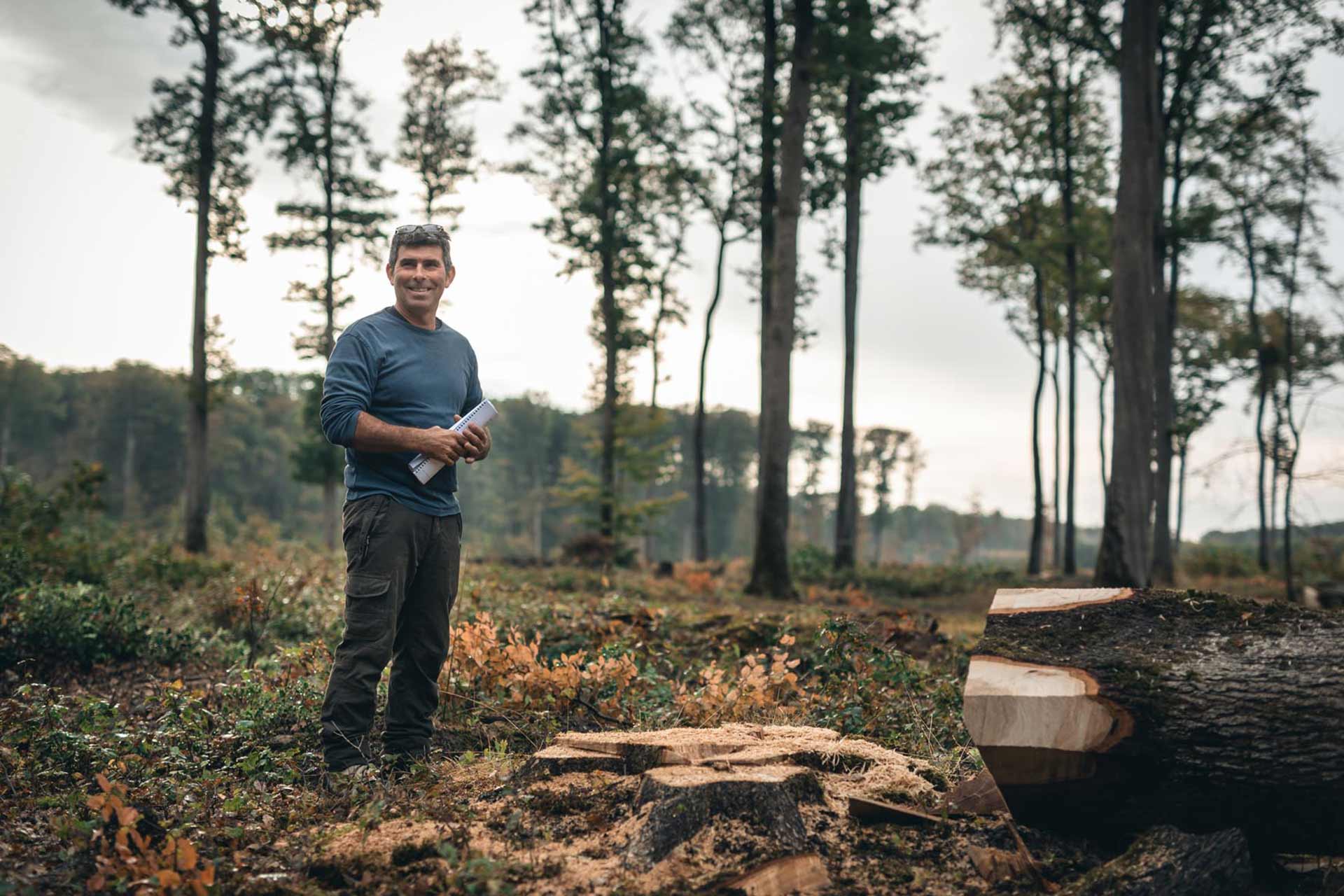The creation
In France, mature oaks, at least 120 years old, are selected for the production of staves.
Sessile or pedunculate oaks, the quality of forest soils, elevation, climate and planting density are all factors that make every tree unique.
Environmental criteria, which can be likened to the notion of ‘terroir’, directly influence the speed of growth, the size of the growth rings and therefore the fineness of the wood grain.
While wine maturation generally favours a fine grain, spirits benefit from a coarser grain.
1.
Once felled, the oak logs are then cut into ‘staves’ by the cask wood manufacturers.
2.
They are then stacked and stored outdoors for seasoning for between 18 and 36 months and up to 60 months for the most mature wood.
3.
Alternate spells of rain, wind and sun work their magic and chase away the coarser tannins, leaving the noblest tannins time to mature and gain in complexity. At its core, the dampness of the stave wood drops from 80% to 15%.
4.
After this, the coopers enter the scene, assembling the wooden planks transformed into staves to make casks.
5.
Ultimately, the quality of the toasting, the ultimate heat phase, will fully reveal the expertise of the cooper. This crucial step is closely linked to the precision of toasting choices and instructions.
The figures speak for themselves
5
=
1
=
The white oak Quercus Alba is the most common species in America, particularly in the East of the United States.
In comparison with its close European cousin, its tannins lend less structure but can become particularly aromatic depending on the choice of toast.
Whether referred to by their scientific name, octalactones, or more locally as whisky lactones, these aromatic compounds create the coconut, vanilla or even dried banana flavours that form a set of markers specific to the use of American oak casks.
American oaks also grow faster than their European counterparts and have a specific structure that allows them to be sawn.
This array of distinctive features allows the logs to be impeccably optimised, hence limiting the loss of raw material and ultimately resulting in a much more attractive price.




